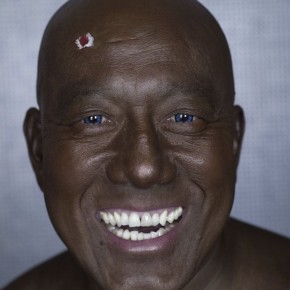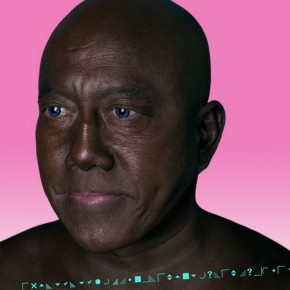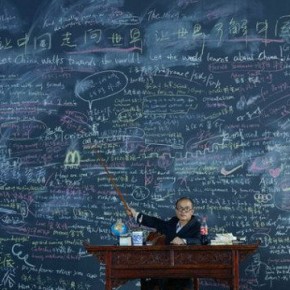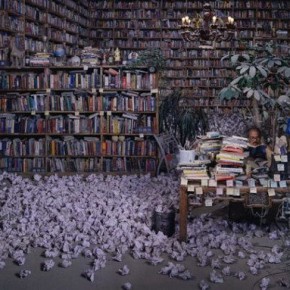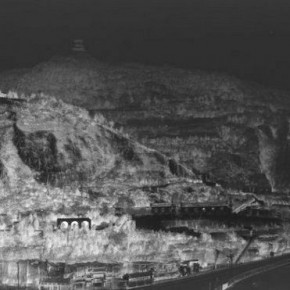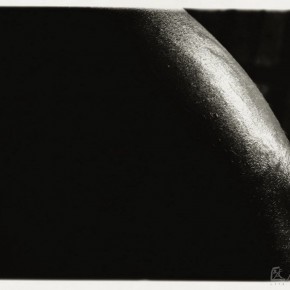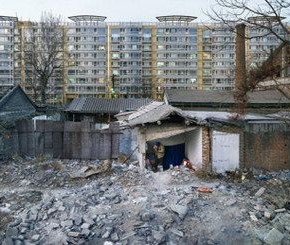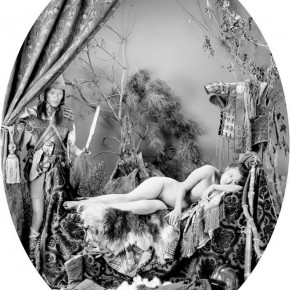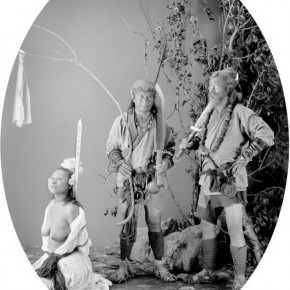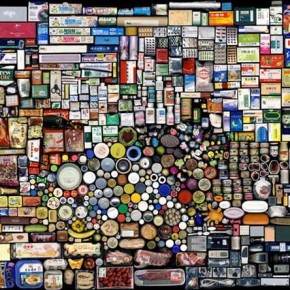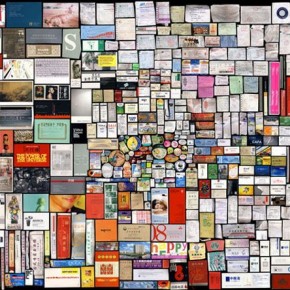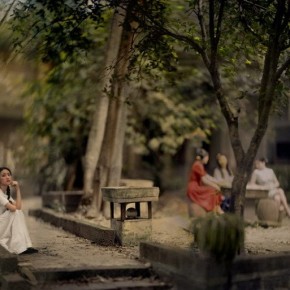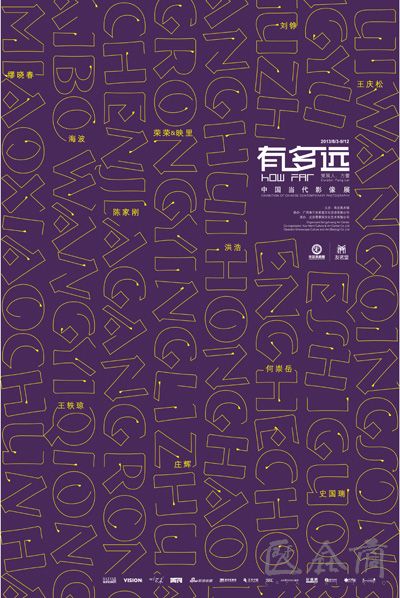
On August 3, 2013, “How Far - Chinese Contemporary Photographic Exhibition” opened at the Songzhuang Art Center, and the exhibition continues until September 12, 2013. The exhibition is planned by Fang Lei, hosted by the Songzhuang Art Center, in cooperation with Guangxi Nanning Your Ment Cultural Exchange Co., Ltd., and organized by the Snowy Landscape (Beijing) Culture and Art Co., Ltd. It presents more than 60 works of photography by 11 famous contemporary artists including Miao Xiaochun, Rongrong & Yingli, Shi Guorui, Wang Qingsong, Zhuang Hui, etc.
"How far?" happens to be interrogative, and is very experimental in nature. We are going to mainly discuss the “l(fā)arge-format” photography. A 4 x 5 inches of a large-format of Loose-leaf sheet enlarges 12 times a 35 mm film, while a 5 x 7 inches one is 25 times a 35 mm film, and a 8 x 10 inches one is 50 times a 35 mm film. And so on.
So we have to explore the conceptual distance walking with a large-format camera in a space, and the distance and density for imaging.
Firstly, an idea is the initial imaging of an artist, which is virtual and blurred, and even clarity is self-conscious, instead of freezing it into a real picture, it’s just a conceived image. The second reaction happens between the attitudes in facing a real scene and the objectivity of the lens, a photographer would never agree that the lens of a camera are indifferent, objective and completely scientific, and even digital. A photographer hopes that the eyes and lens react to the object, making the human and machine becoming a couple at the same moment. Third action is the back part of the camera, which is very mysterious, performing in the dark, going through calculations and guessing, it eventually realizes what an artist can see, so it is loyal.
Secondly, what is focused on by the spectators are details, which have their own quality, at the same time, texture is also a temptation, for people to see and even touch, it’s mentally different from touching the body of a real thing, because the details directly guide the methods and ideas of their visual observation, as well as forcing them to reminisce, while there are many similarities between the tactile experiences of details and taste, the charming, personal experience, and it’s unforgettable.
Thirdly, it’s a fact that the camera is just satisfied with our desire for a shot, and we love to see the lens blinking and listen to the sound of the camera’s shutter, listening to the lively scene, as well as the immediate playback of the films, following from this, the shoot is at the end, photography becomes a transition, photos are just like a file being input into a computer, while photos are no longer important.
Fourthly, it’s obvious that there are different mental states in using cameras to record people's lives, the objective lens often depends on the wills of subjective people. The same behavior renders plausible the realities on the screen, while it also makes people question themselves if the ability and experience is normal. The world is recorded all the time by photography, while it changes the view, position and attitude of the world all the time.
Fifthly, we should thank photography, as through lifelike images people see something more, and believe it, as there are details, and unforgettable scenes.
About the exhibition
Curator: Fang Lei
Duration: August 3 – September 12, 2013
Venue: Songzhuang Art Center
Artists: Chen Jiagang, Haibo, Hong Hao, He Chongyue, Liu Zheng, Miao Xiaochun, Rongrong & Yingli, Shi Guorui, Wang Qingsong, Wang Yiqiong, Zhuang Hui
Translated by Chen Peihua and edited by Sue/CAFA ART INFO



